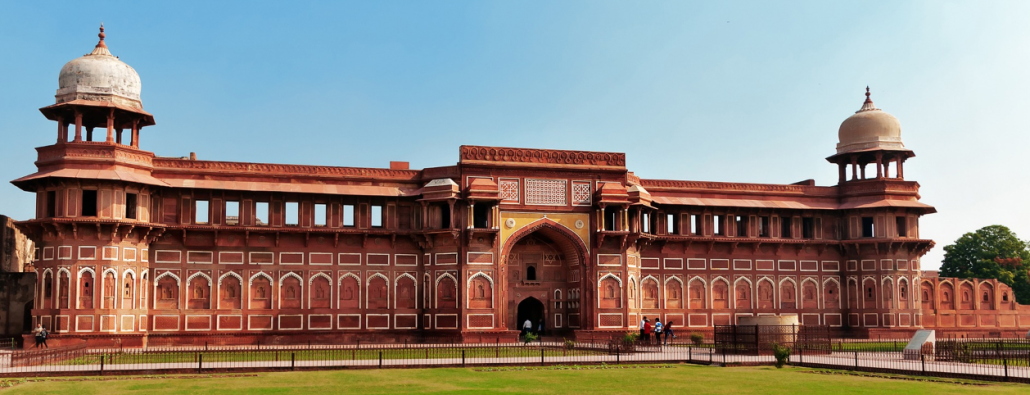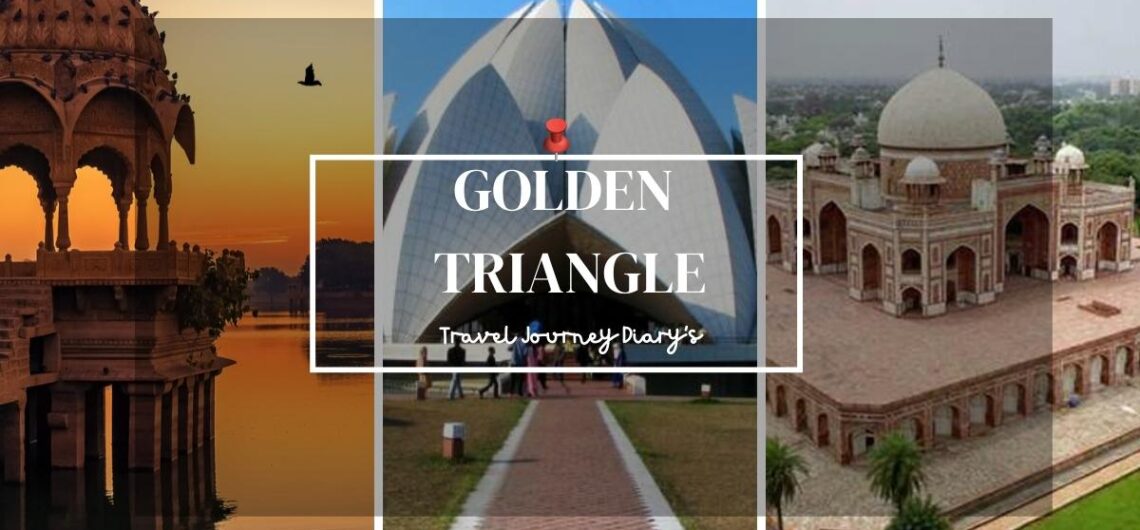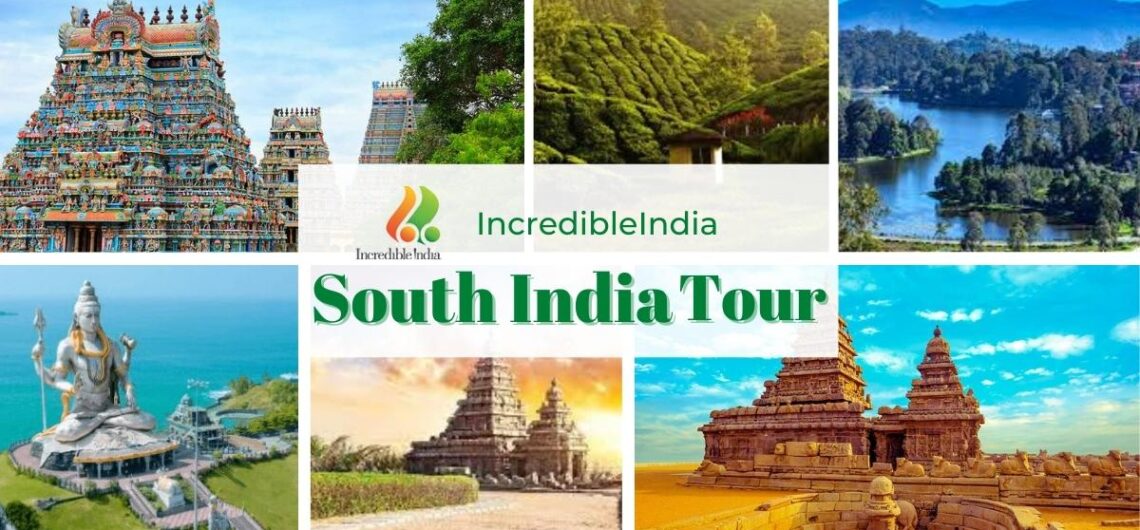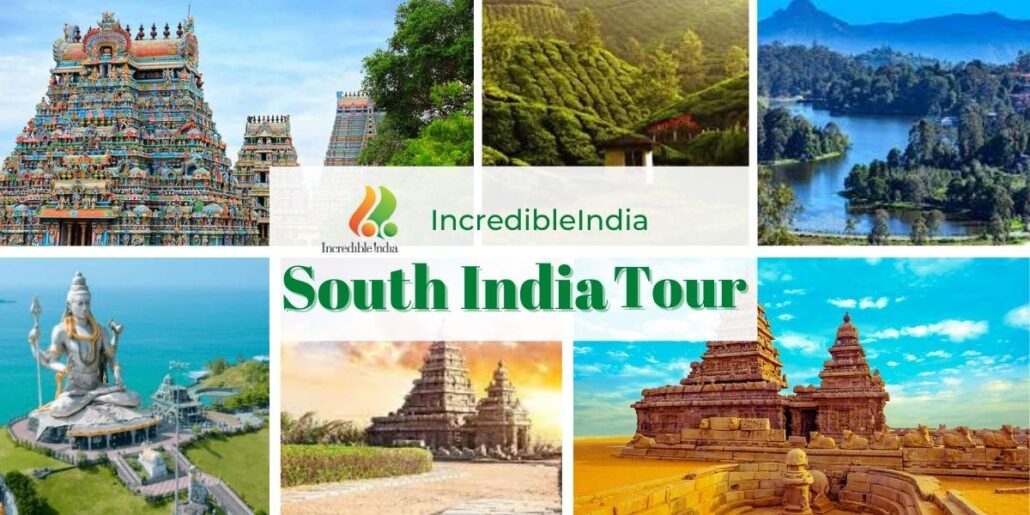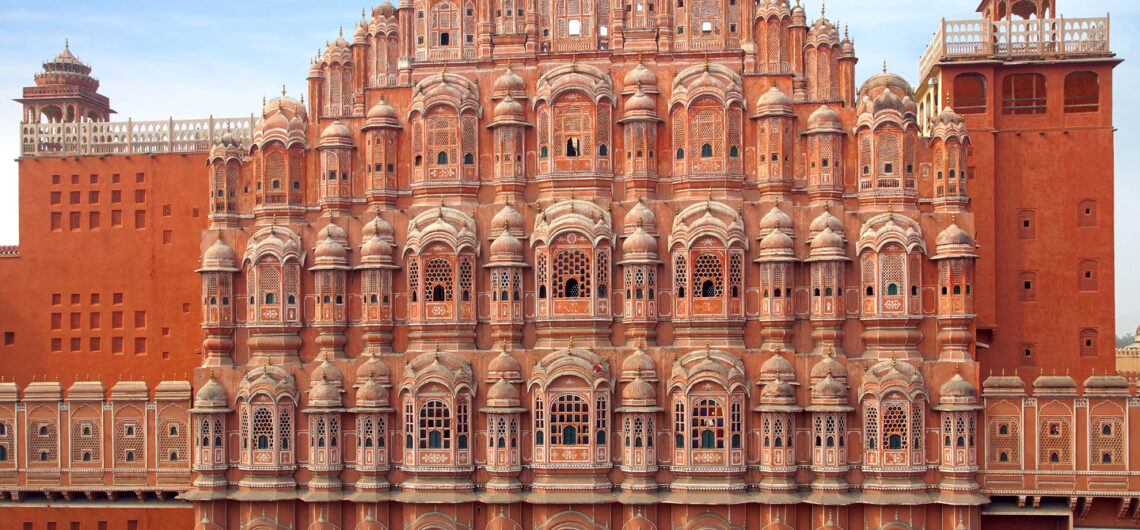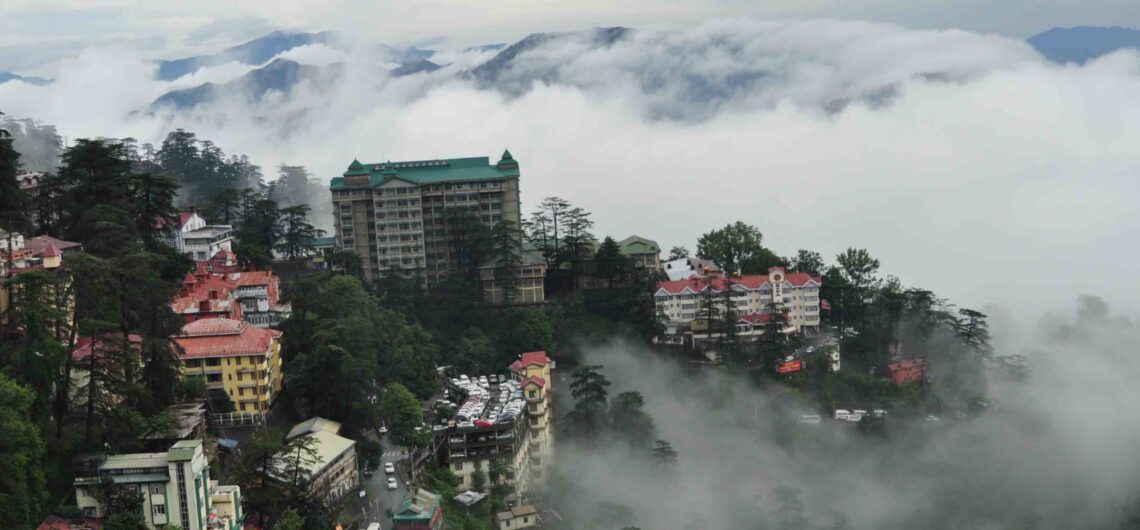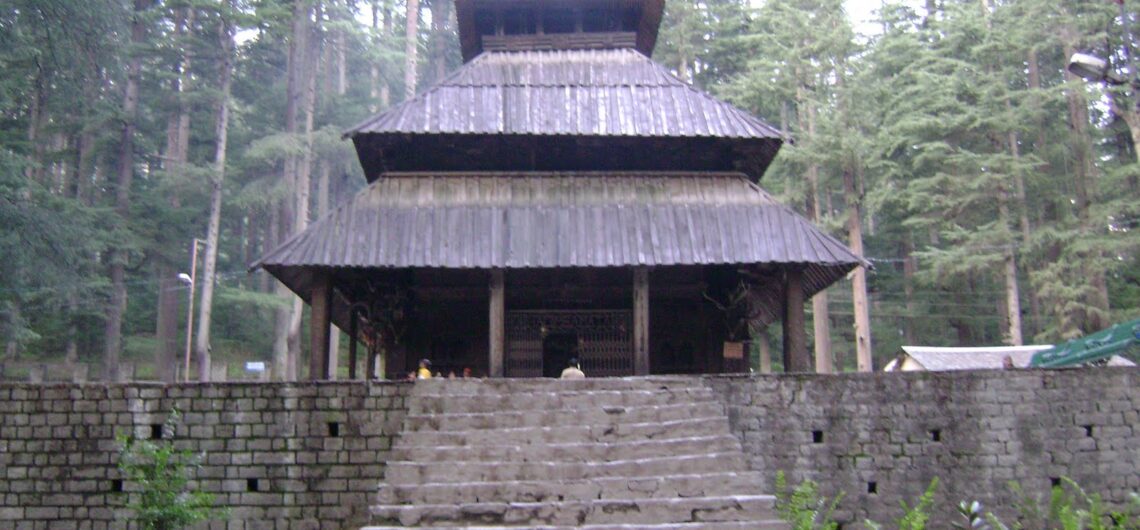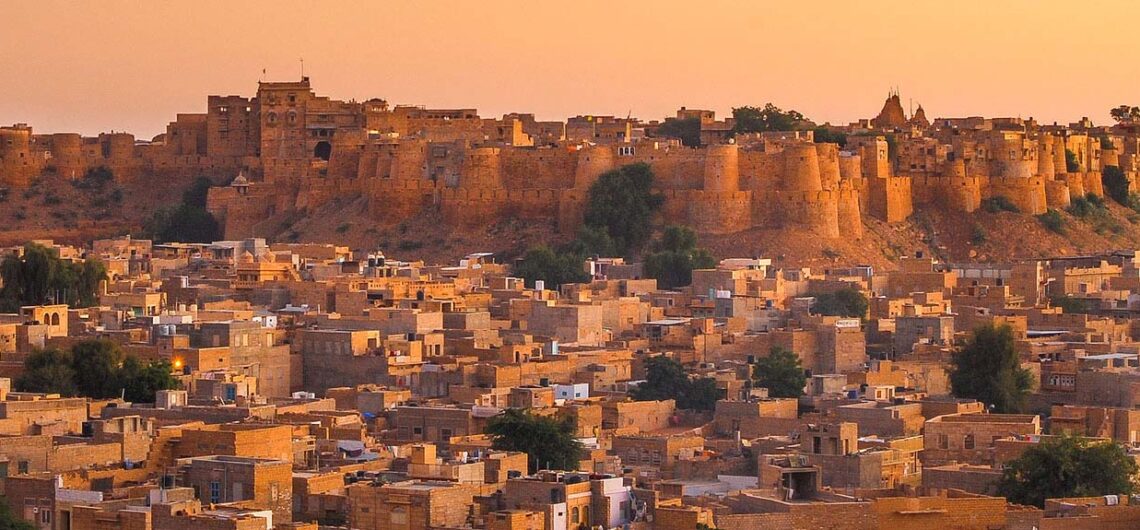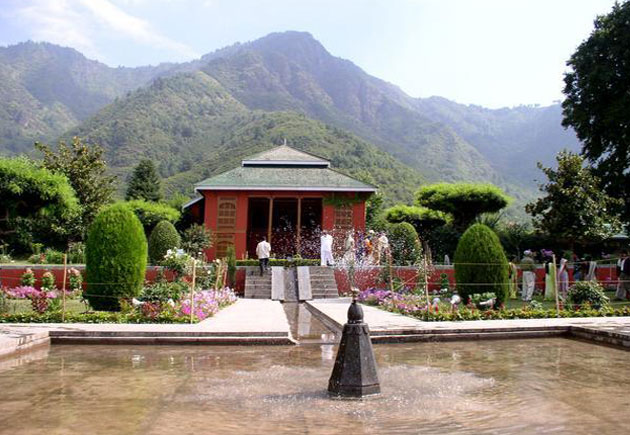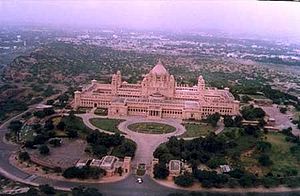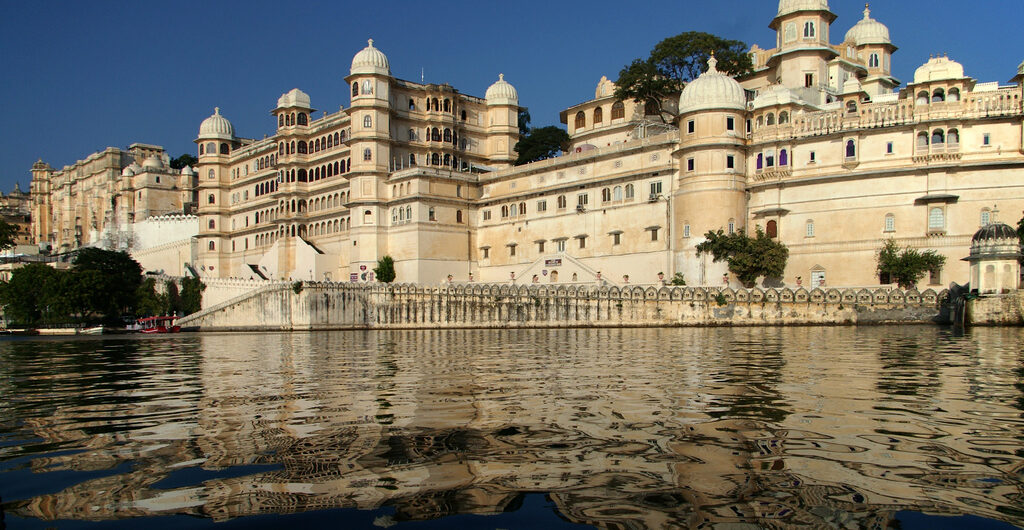Udaipur Tourism Some Interesting Facts About Udaipur The city of lakes, Udaipur, is also known as the White City on account of the predominance of white-coloured structures in the city. Udaipur is a favourite destination for many Hollywood and Bollywood directors. The enchanting Lake Palace on Lake Pichola was immortalised as the lair of Octopussy, in the swashbuckling James Bond movie of the same name. Udaipur Solar Observatory (USO), situated on an island in the Fateh Sagar Lake, is considered as the best solar observing site in Asia. Surrounded by luxury and beauty, Udaipur is a beautiful city situated in the midst of the Aravalli Ranges in Rajasthan. Phrases like “Venice of the East”, the “Most Romantic City of India”, the “Kashmir of Rajasthan”, the ‘City of Sunrise’, the ‘City of Domes’, the ‘City of Temples’, the ‘City of Historicity’, are frequently used to describe the oasis that lies in the hostile deserts of Rajasthan, Udaipur. Dotted with azure water lakes, and the lush Arravali hills, Udaipur is drenched in every bit of romance and beauty. The nostalgia of intimacy, purity, royalty, chivalry hits everyone who witnesses the city of Udaipur. The city is blessed with shimmering lakes, affluently decorated forts, well-stocked museums and meticulous gardens. It can make you fall in love with its fascinating highlights at the very first sight. There’s nothing in India which is as beautiful, calm, pleasant, dynamic, vibrant, and welcoming as Udaipur. The enchanting beauty of Udaipur attracts many tourists from across the globe. Built under the reign of Maharana Udai Singh II in 1559, this city was made on the bank of blue water Pichola Lake. In years gone by, Udaipur was the capital of the Rajput kingdom of Mewar, ruled by the Sisodia clan with the support of the Jhala clan. Experiencing
Udaipur Tourism
Some Interesting Facts About Udaipur
- The city of lakes, Udaipur, is also known as the White City on account of the predominance of white-coloured structures in the city.
- Udaipur is a favourite destination for many Hollywood and Bollywood directors. The enchanting Lake Palace on Lake Pichola was immortalised as the lair of Octopussy, in the swashbuckling James Bond movie of the same name.
- Udaipur Solar Observatory (USO), situated on an island in the Fateh Sagar Lake, is considered as the best solar observing site in Asia.
Surrounded by luxury and beauty, Udaipur is a beautiful city situated in the midst of the Aravalli Ranges in Rajasthan. Phrases like “Venice of the East”, the “Most Romantic City of India”, the “Kashmir of Rajasthan”, the ‘City of Sunrise’, the ‘City of Domes’, the ‘City of Temples’, the ‘City of Historicity’, are frequently used to describe the oasis that lies in the hostile deserts of Rajasthan, Udaipur. Dotted with azure water lakes, and the lush Arravali hills, Udaipur is drenched in every bit of romance and beauty.
The nostalgia of intimacy, purity, royalty, chivalry hits everyone who witnesses the city of Udaipur. The city is blessed with shimmering lakes, affluently decorated forts, well-stocked museums and meticulous gardens. It can make you fall in love with its fascinating highlights at the very first sight. There’s nothing in India which is as beautiful, calm, pleasant, dynamic, vibrant, and welcoming as Udaipur. The enchanting beauty of Udaipur attracts many tourists from across the globe.
Built under the reign of Maharana Udai Singh II in 1559, this city was made on the bank of blue water Pichola Lake. In years gone by, Udaipur was the capital of the Rajput kingdom of Mewar, ruled by the Sisodia clan with the support of the Jhala clan. Experiencing Udaipur is all about reliving the life of the monarchs and appreciating the city’s man-made beauty.
What and Where to Eat in Udaipur:
Best Places to Eat in Udaipur
Tickle your taste buds with the best of Rajasthani cuisines offered here. On a tour to Udaipur, travellers should relish spicy and sweet food. Tourist can enjoy the following things on their tour to Udaipur.
Ghewar: Traditional sweet of Rajasthan, made of flour, sugar and clarified butter
Mirchi Bada: Savour this spicy snack with tomato, mint or tamarind chutney. It is a snack which consists of chilli and potato stuffing
Pyaaz Kachori: A spicy snack, it is made of onions filled in deep fried dough.
Dal Baati Choorma: This traditional dish of Rajasthan is a filling, and is made of three different items i.e. dal (lentils), baati (wheat bread) and choorma (a sweet made of wheat, sugar and dry fruits)>
Following are the places, where travellers can enjoy delicious Rajsthani and Indian cuisines:
Ambrai Restaurant:
Dish wise recommendations here include the Tandoori Platter, Biryani and Tomato Curry. Overlooking the bluer than blue Pichola lake, Ambrai is an ideal place to enjoy formal and informal discussions. Located in a magnificent mansion, this restaurant serves scrumptious Rajasthani and Indian food.
Timings: 9:00 AM – 11:00 PM, Open on all days
Address: Amet Haveli, O/S Chandpole, Udaipur
Sunset View Terrace:
Located at the terrace of the city palace, this restaurant is an ideal place to enjoy mouth-watering traditional cuisines. Enjoy a royal dinner here as you taste the delicious Indian delicacies and some of the best cocktails.
Timings: 11:00 AM – 10:00 PM, Open on all days
Address: City Palace Complex, Udaipur
Natraj Dining Hall:
This famous restaurant is famous amongst tourist and residents alike. Take a pick from Rajasthani or Gujrati food, and enjoy the best of delicacies.
Timings: 11:00 AM – 3:30 PM, 6:30 – 10:30 PM, Open on all days
Address: 22-24 City Station Road, Nada Khada, Udaipur
Whistling Teal:
Whistling Teal is a popular joint for all the food lovers. Set amidst the beautiful Jhadol Haveli, it is an ideal location to indulge in scrumptious delicacies.
Address: BhattiyaniChohtta City Palace Area, Udaipur, Rajasthan
Cafe Edelweiss:
This is the place where one can enjoy quick snacks with assorted varieties of pastries. The staff here is friendly and efficient, and happy to talk and give unique tips.
Address: Gangaur Ghat Road, Udaipur, Rajasthan, India
Timings: 8:30 AM to 8:30 PM, Open all days
Other then cafes and restaurants, one can experience yummy street food at Sukhadia circle. Known as the heart of Panchwati, Sukhadia circle is flocked by all the hungry souls.
Shopping in Udaipur:
Clock Tower:
This is an old town centre which has a magnificent collection of gold and silver items.
Address: Silawatwari, Brahmpuri, Udaipur, Rajasthan 313001, India
Ganjaur Ghat
This shopping arena is famous for carpets, pottery, paintings, and items made of cane.
Address: Pichola, Udaipur, Rajasthan 313001, India
Lake Palace Road
Lake Palace Road is good for picking up all types of textiles, including embroidered and woven items.
Address: Lake Palace Rd Udaipur, Rajasthan 313001, India
Hathi Pole
All sort of handicrafts and folk arts of Rajasthan are available here. Famous Rajasthani miniature paintings are also accessible here.
Address: Hathi pol, Udaipur, Rajasthan, India
Bada Bazaar
Pick up leather items (bags, wallets, footwear and more), jewellery (both silver and camel bone) or Rajasthani fabrics (Batik and Bandhini prints) from this market at reasonable prices.
Address: Ghanta Ghar, Bada Bazaar, Udaipur, Rajasthan, India
Things to shop in Udaipur:
- Handicrafts
- Pottery: made of both metal and mud.
- Jewellery
- Wooden toys
- Antique
- Paintings: Miniature paintings inspired by the Rajputs & Mughal pottery which include pots, plates, vessels and different kinds of containers. Apart from this, brassware and terracotta sculptures are also popular. These paintings are available on silk, wood, marble, paper and ivory.
- Toys
- Puppets
- Wall hangings
- Cloth lanterns
- Handmade papers
- Bangles (lac kichudiyan)
- Bandhej (fabric)
- Juti (traditional shoes)
Outdoor Activities and Sports:
Horseback riding:
Discover the best of Udaipur on a horseback. This activity reflects the age-old institution of hospitality, which is so much a part of Indian culture. Join the royal adventure, and witness the fantastic landscape and unrivalled views.
Camel Riding:
Camel riding is one of the most famous activities of Udaipur. Take a ride through the city and to the deserts and enjoy amazing views of the beautiful lakes, majestic palaces and age-old temples of Udaipur.
Travel Information:
How to Reach Udaipur:
By Air: Many airlines operate flights from Udaipur (Maharana Pratap Airport) to Delhi, Jaipur, Aurangabad, Jodhpur, Mumbai and other important cities.
By Railways: Udaipur Railway Station is located at a comfortable distance from the city of Udaipur. There are frequent trains which run to and from Udaipur connecting Jaipur, Mumbai and Delhi. One can enjoy the scenic beauty of Rajasthan by travelling in the luxurious train, Palace on Wheels.
By Road: A wide network of bus services link Udaipur with several destinations. The distances of some of the important cities from Udaipur are Agra 630 km, Ahmedabad 256 km, Jaipur 420 km, Jodhpur 255 km and Mount Abu 162 km.
Weather:
Summer (March to October): 40°C – 45° C
Winter (November to February): 12°C – 30° C
Best Time to Visit Udaipur:
The best time to visit Udaipur is between the months of September and March.
